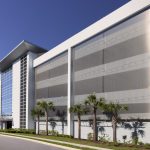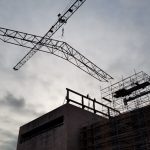
As the Class of 2025 enters the workforce, the metal construction industry is at a pivotal juncture. With veteran tradespeople steadily retiring and demand for skilled labor persisting, this year’s graduates represent both a timely opportunity and a pressing workforce challenge. While overall job openings in construction have declined year-over-year, more than half of contractors still anticipate increasing staffing in the second half of 2025, according to ABC’s Construction Confidence Index. For metal builders, fabricators, and erectors, now is a great time to act decisively to recruit the future workforce.
A favorable shift toward skilled trades
The good news is that Gen Z is demonstrating a growing interest in trade careers over traditional four-year college paths. These young workers, born between 1997 and 2013, are increasingly pursuing practical, hands-on vocations that offer financial stability, upward mobility, and meaningful work. Research from the National Student Clearinghouse reveals that enrollment in high-vocational public two-year colleges has risen nearly 20 percent since spring 2020, accounting for roughly one-fifth of all public community college students.
Findings from ADP Research reinforce this growing interest: as of January 2024, 18.6 percent of workers aged 20–24 held blue-collar jobs, 2.3 percent (1.14 times) more than that of the same age group in January 2019 and 2.5 percent higher than that of workers 25 to 39.
Reframing construction careers for a new generation
While interest is growing, the industry still faces persistent misconceptions about a construction career. Too often, potential candidates view the field as physically demanding and lacking in career progression. In reality, modern metal construction offers a range of roles that go far beyond manual labor.
Positions in Building Information Modeling (BIM), project coordination, materials logistics, safety compliance, and digital design are increasingly central to daily operations. In the field, drone pilots, equipment techs, and sustainability experts now work alongside welders, fitters, and installers. These roles appeal to students from STEM, business, and design backgrounds—and can be presented as such.
Five practical strategies for recruiting grads in metal construction
To convert interest into action, metal construction employers can better align recruitment efforts with the values and behaviors of Gen Z. Below are five actionable strategies that can help build a sustainable talent pipeline:
Partner with colleges, trade schools, and apprenticeship programs
Developing strong, consistent relationships with vocational schools, community colleges, and union training centers is essential. Attend career fairs, offer guest lectures, and consider sponsoring programs that showcase the variety of roles in metal construction. Collaborate with institutions to amplify messaging, particularly on social media, and ensure your company is at the top of students’ minds when they seek placement.
Prioritize career development and upskilling
Gen Z strongly emphasizes gaining practical, hands-on skills and pursuing clear pathways for career advancement. The skilled trades offer a direct route to both, with structured on-the-job training and industry-recognized certifications that enable young professionals to progress quickly. In many cases, this upward mobility outpaces what is typically available in more traditional corporate settings.
According to ADP Research’s People at Work 2025 report on skills development, only 21 percent of construction workers in North America strongly agree their employers are investing in their growth, and only 25 percent strongly agree they have the skills to advance. This presents an opportunity for metal construction firms to rise above the competition and offer what new graduates are seeking. Structured training, mentorship, and clear advancement pathways can distinguish a firm.
Implement mobile-friendly workforce platforms that allow young workers to engage in learning on the go—whether in welding, rigging, digital modeling, or leadership development. Such a platform can also help metal construction businesses and workers align with a career development pathway.
Create a tech-savvy workplace
Gen Z has grown up in a digital-first world and expects a work environment to match. From hiring to daily operations, every interaction should be tech-enabled and mobile-friendly. Employers can consider adopting platforms that simplify processes such as online applications, mobile communication, and self-service tools for scheduling and payroll.
A streamlined, digital-first approach not only improves efficiency but can also boost engagement and retention. It can show candidates that the organization is current and forward-thinking and a place where they can learn and grow. Consider how to modernize HR and workforce management systems to ensure they are accessible, mobile-optimized, and streamlined for the next generation of talent.
Once talent is secured, a mobile-friendly, seamless onboarding experience reinforces the organization as a strong place to launch a career in construction. New hires should be able to access pay, schedules, and benefits from a single platform—meeting this standard can be a massive lift towards standing out in today’s talent market.
Partnering with an HR technology provider that offers construction-specific, tech-enabled solutions can help give your organization a competitive edge when recruiting college graduates.
Offer competitive compensation and benefits
This will never change. If possible, metal construction businesses, like any other organization across any industry, must offer top-of-the-line compensation and benefits to be competitive for talent.
Partnering with the right HR technology provider can give employers access to localized and robust compensation and benefits benchmarking data, helping ensure their total compensation packages remain competitive to recruit and retain the best construction talent. This data type can provide metal construction businesses with a significant advantage.
Another thing to consider is that Gen Z brings a unique perspective to benefits. While traditional offerings like medical, dental, and retirement plans still matter, this generation also values non-traditional perks such as mental health support, a Day of Service, pet insurance, and flexible work schedules. A well-rounded benefits package that reflects conventional needs and Gen Z priorities and stays ahead of the competition can significantly improve recruitment and retention.
Do not forget about retention
The first part of the equation is recruiting college graduates to join the metal construction industry. Once new workforce members are brought in, retention becomes the next challenge. Ensuring employees stick together helps develop team chemistry, cohesion, and knowledge that can take years to replace if someone leaves.
According to ADP Research’s Today at Work 2025 Issue 2 report, the construction industry’s turnover rate is 3.29 percent in non-summer months and 3.69 percent in summer months, the fourth highest of the 13 industries analyzed.
For metal construction firms working on retaining college graduates, some strategies include communicating a career growth plan, early and often check-ins to monitor engagement, and recognizing wins, no matter how big or small.
The metal construction industry is at a defining moment. With the Class of 2025 entering the workforce amid ongoing labor shortages, proactive recruitment is not only prudent—it is essential. By aligning strategies with the values and expectations of Gen Z, firms can build a sustainable talent pipeline that supports growth, innovation, and operational resilience. The most successful employers will be those who embrace technology, prioritize skill development, and tell a compelling story about the future of work in metal construction.
After spending six years at Accenture leading technology and strategy projects, Kit Dickinson moved on to IDI, where he was president and responsible for managing strategic partnerships, product innovation, sales, marketing, and overall company leadership. Dickinson led IDI to a successful acquisition by ADP, where he was responsible for overseeing the integration of IDI’s capabilities into ADP technology. Dickinson recently moved into ADP’s business development organization as an industry executive to help lead ADP’s industry-focused efforts.






